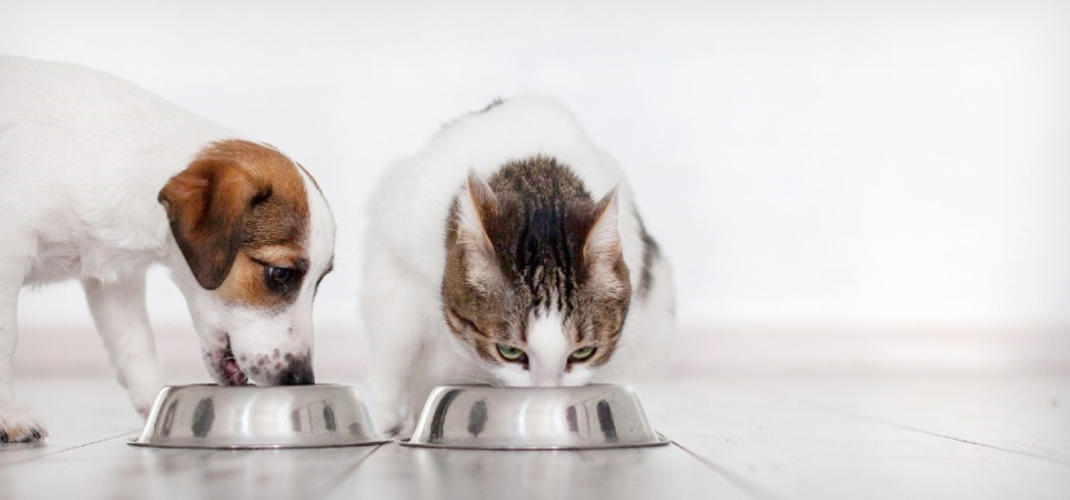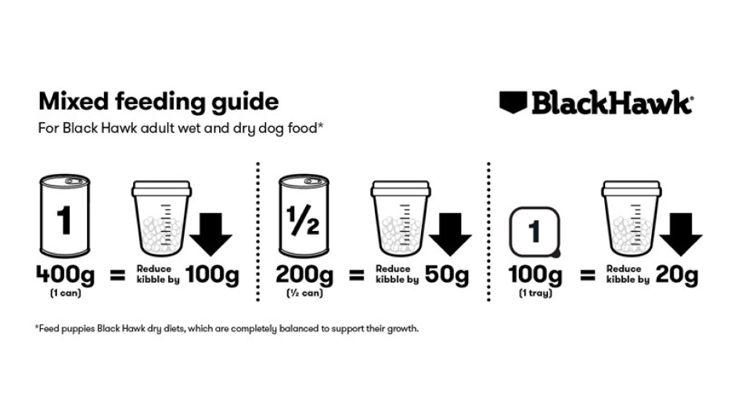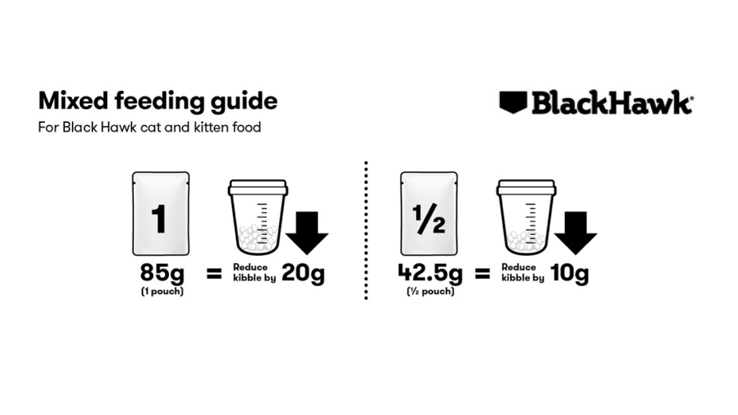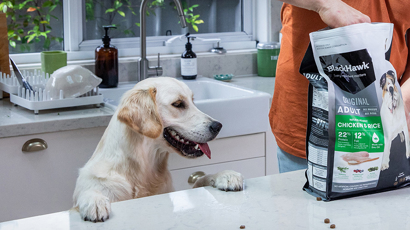Mixed Feeding - Wet & Dry Food

The term "mixed feeding" means combining dry kibble with wet foods, whether they be casserole style, a 'loaf', 'chunks in gravy or jelly' usually in a can or pate/mousse-like formats.
Why do some pet parents choose mixed feeding?
Pet parents choose mixed feeding to provide their pets with a variety of textures, to improve taste and satisfaction, or to give their pet some new and exciting meal options. This can often be a priority for fussy dogs and cats, who have 'gone off' their meals for one reason or another.
Black Hawk is a balanced and complete diet for your dog or cat, meaning that it is formulated to provide all of the nutritional requirements that your dog or cat needs to thrive.
Mixed feeding - combining wet & dry food - is a great option and we have put together our recommendations to help ensure their meals remain balanced and safe for your furry family member.
Suggested Mixed Feeding for your Dog

Suggested Mixed Feeding for your Cat

Guidelines to keep your Pet’s Meals Balanced
The first and most important rule of thumb is to ensure that the majority of your pet’s diet is a premium food which respects recognised nutritional guidelines (such as AAFCO).
Meeting AAFCO guidelines means that the food must fulfil specific standards in nutrition, to ensure it contains the right nutrients to support everyday life and activity.
The good news is that Black Hawk dry kibble and the wet tins, trays or pouches all fit the guidelines, and most often exceed the standards when certain nutrients are beneficial to your pet’s health. This means we can mix-and-match wet and dry foods with confidence, and relax as long as about 90% of what they eat is from the range.
The additional 10% of their diet might be those ‘extras’ that we add on the side, to treat, reward, entertain, occupy, stimulate their appetite or as an interaction: to share a bit of a moment with each other.
It’s always good to think about not only the amount of these extras we give, but why we give them. If there’s good reason for giving extras above and beyond their ‘complete and balanced meals’, then know you have many options to choose from, and we should do our best to allocate the additional calories they represent appropriately, so as not to overfeed.
When mix-feeding wet and dry foods, don’t forget to look at the feeding guidelines too.
You can have even greater peace-of-mind that you’re delivering what they need to truly thrive if you follow the tables on the packaging. Weighing things out might be an inconvenience the first couple of times, but it will certainly protect their health and wellbeing in the long run.
If there’s any confusion, be sure to reach out and speak with the makers of the diet, as they should be able to give you an individualised recommendation, and take the guess work out of the decisions of how much to feed.



